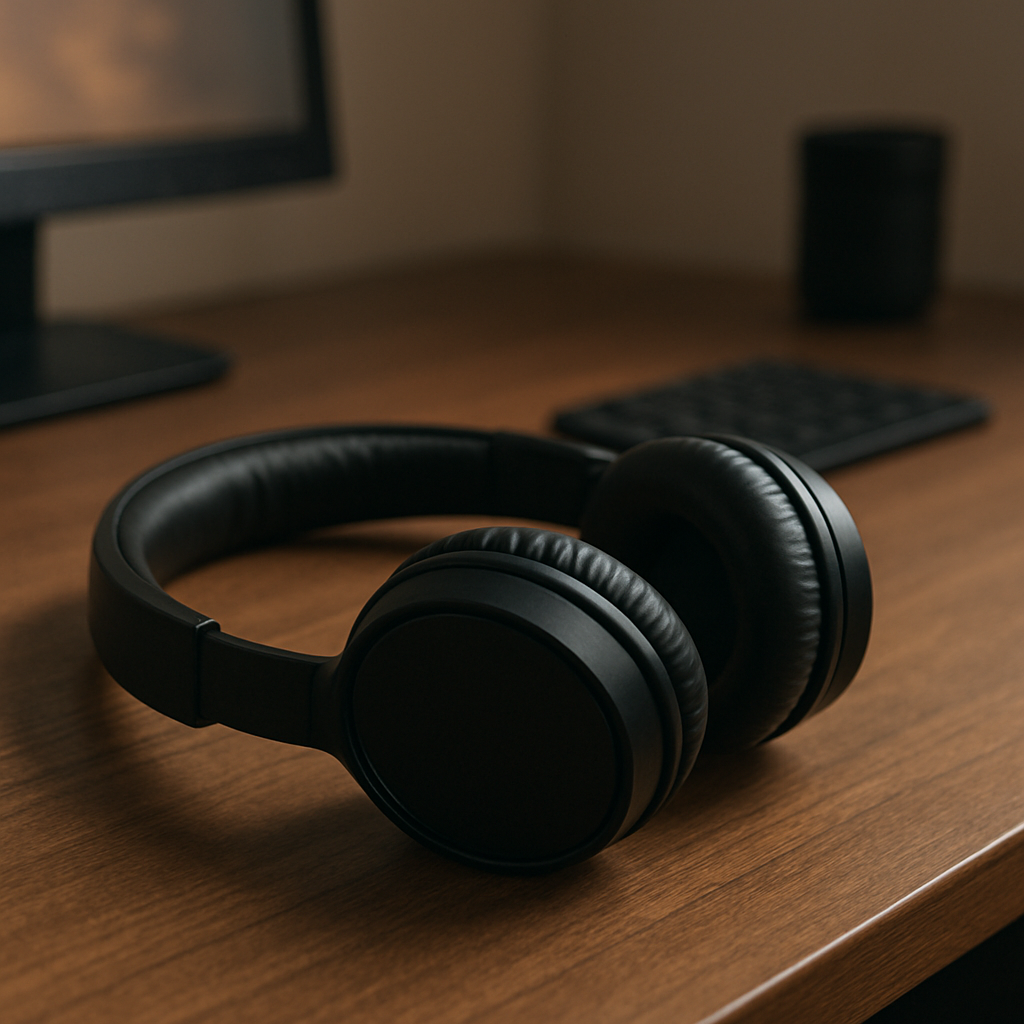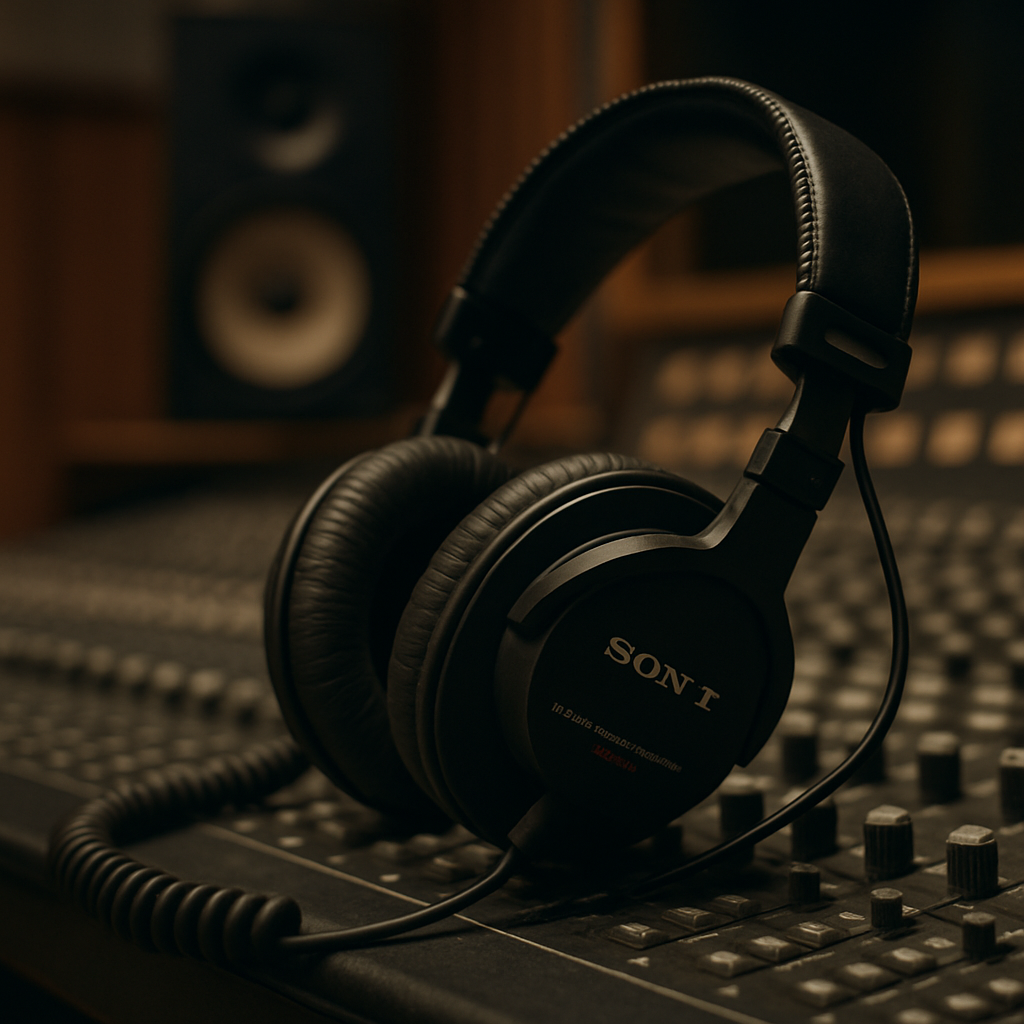
When you’re transcribing audio, every detail matters. Quality headphones can help you catch every word, reducing the number of rewinds and allowing you to complete your work faster. They also provide a level of comfort that’s important if you’re wearing them for long periods. Let’s delve into what makes a great pair of transcription headphones.
Sound Quality
Clear sound is crucial for transcription. Headphones with excellent sound quality allow you to hear every nuance in the audio, which is important for understanding accents, low-volume speech, and background sounds. The best headphones balance bass, mids, and treble to ensure clarity across all frequencies.
The importance of sound quality extends beyond just hearing the words clearly. It involves capturing subtle shifts in tone, which can be essential for understanding context or speaker intent. High-resolution audio support can be a game-changer, providing an immersive listening experience that reveals details standard headphones might miss. This capability is particularly beneficial for transcribing complex audio, such as recordings with multiple speakers or challenging linguistic elements.
Moreover, sound quality can affect your cognitive load. When headphones deliver crisp and clear sound, it reduces the mental effort required to discern words and phrases, allowing you to focus more on the transcription process itself. This can lead to faster and more accurate work, as you’re less likely to make errors or need frequent playbacks.
Comfort and Fit
Transcriptionists often wear headphones for several hours at a time, so comfort is a top priority. Look for headphones with cushioned ear pads and adjustable headbands. Over-ear designs are typically more comfortable for prolonged use compared to on-ear or in-ear styles.
Comfort goes beyond just cushioning; it also involves the overall design and weight of the headphones. Lightweight models reduce the strain on your neck and head, which can be particularly beneficial during long transcription sessions. Ergonomic designs that conform to the shape of your head help distribute weight evenly, preventing pressure points that can cause discomfort over time.
Adjustability is another critical factor in comfort. Headphones that offer multiple adjustment points, such as tilting ear cups and extendable headbands, allow you to find the perfect fit for your head size and shape. This customization is essential for maintaining comfort throughout extended use, ensuring that your focus remains on the task at hand rather than on adjusting your headphones.
Noise Isolation
Whether you’re working in a bustling office or a quiet home, noise isolation helps keep external sounds from interfering with your transcription work. This feature allows you to focus on the audio you’re transcribing without distractions.
Noise isolation can come in two forms: passive and active. Passive noise isolation relies on the physical design of the headphones, using materials and construction to block out ambient noise. This is often achieved through snug ear pads that form a seal around your ears, effectively reducing external sounds.
Active noise cancellation, on the other hand, uses advanced technology to counteract ambient noise. By producing sound waves that negate external sounds, active noise cancellation creates a peaceful environment for transcription. This technology is especially useful in environments where noise levels fluctuate, such as shared office spaces or public areas, allowing you to maintain concentration without interruption.
Top 6 Transcription Headphones in 2025
1. Sony WH-1000XM5

Sony continues to lead the pack with the WH-1000XM5, a powerhouse in audio performance. These headphones are renowned for their superior noise-cancelling capabilities, making them ideal for transcriptionists working in noisy environments. The sound quality is crisp and precise, and they come with cushioned ear pads for extended comfort.
The WH-1000XM5 offers an intuitive user experience with touch-sensitive controls, allowing transcriptionists to adjust volume, skip tracks, or take calls without disrupting their workflow. The headphones’ long battery life ensures they can last through the longest transcription sessions without needing a recharge, a feature that is crucial for maintaining productivity.
Furthermore, the Sony WH-1000XM5 is equipped with adaptive sound control, which automatically adjusts the noise-cancelling level based on your environment. This smart feature enhances your listening experience by optimizing noise reduction in real-time, ensuring you always have the best possible audio clarity for transcription.
2. Bose QuietComfort 55
Bose’s QuietComfort series has long been a favorite among audiophiles, and the QuietComfort 55 is no exception. These headphones offer exceptional noise cancellation and are lightweight, reducing ear fatigue during long transcription sessions. They also provide a balanced audio experience, perfect for capturing every detail in your recordings.
The QuietComfort 55 excels in delivering a natural sound profile, which is key for transcriptionists who need to focus on speech clarity. The headphones are designed with an emphasis on mid-range frequencies, ensuring that spoken words are highlighted and clear. This focus on speech clarity is particularly beneficial when dealing with recordings that have complex audio scenarios.
In addition to sound quality, the QuietComfort 55 offers a high level of comfort with plush ear cushions and a headband that distributes pressure evenly. This design consideration helps prevent discomfort and allows transcriptionists to maintain focus without distraction. The headphones also feature a quick charge option, providing hours of use from just a short charging session, making them a reliable choice for professionals on tight schedules.
3. Sennheiser HD 660 S
For those who prioritize sound quality above all else, the Sennheiser HD 660 S is a top contender. These open-back headphones deliver a natural and accurate sound, ideal for transcriptionists who need to discern subtle audio cues. While they offer less noise isolation, the comfort and sound fidelity make them a worthy choice for quieter environments.
The open-back design of the HD 660 S provides an expansive soundstage, which is beneficial for transcriptionists who need to perceive spatial audio cues. This feature allows users to distinguish between different audio sources, an advantage when working with multi-speaker recordings. The headphones’ high-resolution audio capability further enhances sound clarity, ensuring that every nuance is captured.
Despite the open-back design, the HD 660 S is engineered for comfort with lightweight construction and soft ear pads that conform to your ears. This ensures that users can transcribe for extended periods without experiencing discomfort. These headphones are particularly suited for transcriptionists who work in quiet settings, where sound leakage isn’t a concern and the focus is solely on audio fidelity.
4. Audio-Technica ATH-M50x
Audio-Technica’s ATH-M50x is a favorite among professionals across various fields, and for good reason. These headphones provide excellent sound isolation and a wide frequency range, ensuring that transcriptionists can pick up every detail. The durable design and comfortable fit make them perfect for daily use.
The ATH-M50x is celebrated for its robust build quality, designed to withstand the rigors of daily professional use. Its collapsible design adds to its portability, making it easy to store and transport. This feature is particularly beneficial for transcriptionists who may need to move between different work environments.
In terms of audio performance, the ATH-M50x offers a well-balanced sound profile, with emphasis on clarity and detail. This ensures that transcriptionists can accurately capture every spoken word, even in recordings with complex audio layers. The headphones’ circumaural design provides excellent passive noise isolation, allowing you to focus on your transcription work without distraction.
5. Beyerdynamic DT 770 Pro
The Beyerdynamic DT 770 Pro is known for its robust construction and exceptional sound clarity. These headphones feature a closed-back design, offering excellent noise isolation. The soft velour ear pads ensure comfort even during extended use, making them a reliable option for transcriptionists.
The DT 770 Pro is highly regarded for its detailed sound reproduction, which is essential for transcriptionists who work with high-fidelity audio recordings. The headphones’ ability to render low frequencies accurately makes them particularly useful for understanding audio with varied dynamic ranges, such as music or complex soundscapes in multimedia projects.
Comfort is a standout feature of the DT 770 Pro, with velour ear pads that provide a soft and pleasant wearing experience. This attention to comfort, coupled with a sturdy construction, ensures that the headphones can endure long hours of use without causing discomfort. The DT 770 Pro’s rugged design and replaceable parts make them a long-term investment for serious transcriptionists.
6. AKG K371
The AKG K371 delivers a balanced sound profile, making it easier for transcriptionists to focus on speech clarity. These headphones are lightweight and feature a foldable design, perfect for transcriptionists on the go. The superior comfort and precise audio reproduction make them a great choice for any transcription task.
The K371 offers a neutral sound signature, which is ideal for transcriptionists who require an accurate representation of audio recordings. This neutrality ensures that no frequencies are overly emphasized, providing a true-to-life audio experience that aids in precise transcription work. The headphones’ wide frequency response captures both low and high frequencies, essential for understanding the full spectrum of audio content.
Portability is a key feature of the K371, with a foldable design that makes them easy to carry and store. This convenience is perfect for transcriptionists who travel frequently or need to switch between different work locations. The headphones’ lightweight construction and ergonomic design ensure comfort during extended sessions, allowing you to focus on your work without distraction.
Tips for Choosing the Right Transcription Headphones

When selecting headphones for transcription, consider your specific needs. Do you work in a noisy environment? Opt for headphones with strong noise-cancelling features. If comfort is a priority, look for models with soft padding and adjustable components. Finally, always consider the audio quality, as this will directly impact your ability to transcribe accurately.
Price vs. Performance
While it’s tempting to go for the cheapest option, investing in a quality pair of headphones can save you time and frustration in the long run. Higher-end models often offer better sound quality, comfort, and durability, which are crucial for professional transcriptionists.
The cost of headphones should be weighed against their features and benefits. While budget models might seem appealing, they often lack the advanced features that can enhance transcription accuracy and comfort. Consider the long-term benefits of investing in a high-quality pair that will last, rather than frequently replacing cheaper models that may not meet your needs.
It’s also important to consider the value of your time. High-performance headphones can significantly reduce the time spent on transcription by improving audio clarity and reducing the need for repeated playbacks. This efficiency can translate to more completed projects and higher earnings, making a quality pair of headphones a worthwhile investment.
Wired vs. Wireless
Decide whether you prefer wired or wireless headphones. Wired headphones generally offer better sound quality and don’t require battery charging, while wireless models provide more freedom of movement, which can be beneficial during long transcription sessions.
Wired headphones are ideal for transcriptionists who prioritize audio fidelity and reliability. They eliminate the risk of battery failure mid-session and often provide a more stable connection. However, they can limit mobility, which might be a consideration if you need to move around while working.
Wireless headphones offer the freedom to move without being tethered to a device, which can enhance comfort and convenience, especially during long sessions. The advancements in wireless technology mean that modern models can deliver sound quality comparable to wired options. Consider your work environment and personal preferences when choosing between wired and wireless headphones to find the best fit for your transcription needs.
Conclusion
Choosing the right headphones can significantly impact your transcription work. The best headphones for transcription in 2025 offer a combination of excellent sound quality, comfort, and noise isolation. Whether you choose the Sony WH-1000XM5 for its noise-cancelling prowess or the Sennheiser HD 660 S for its superior sound accuracy, investing in a high-quality pair will enhance your transcription experience. Happy transcribing!


